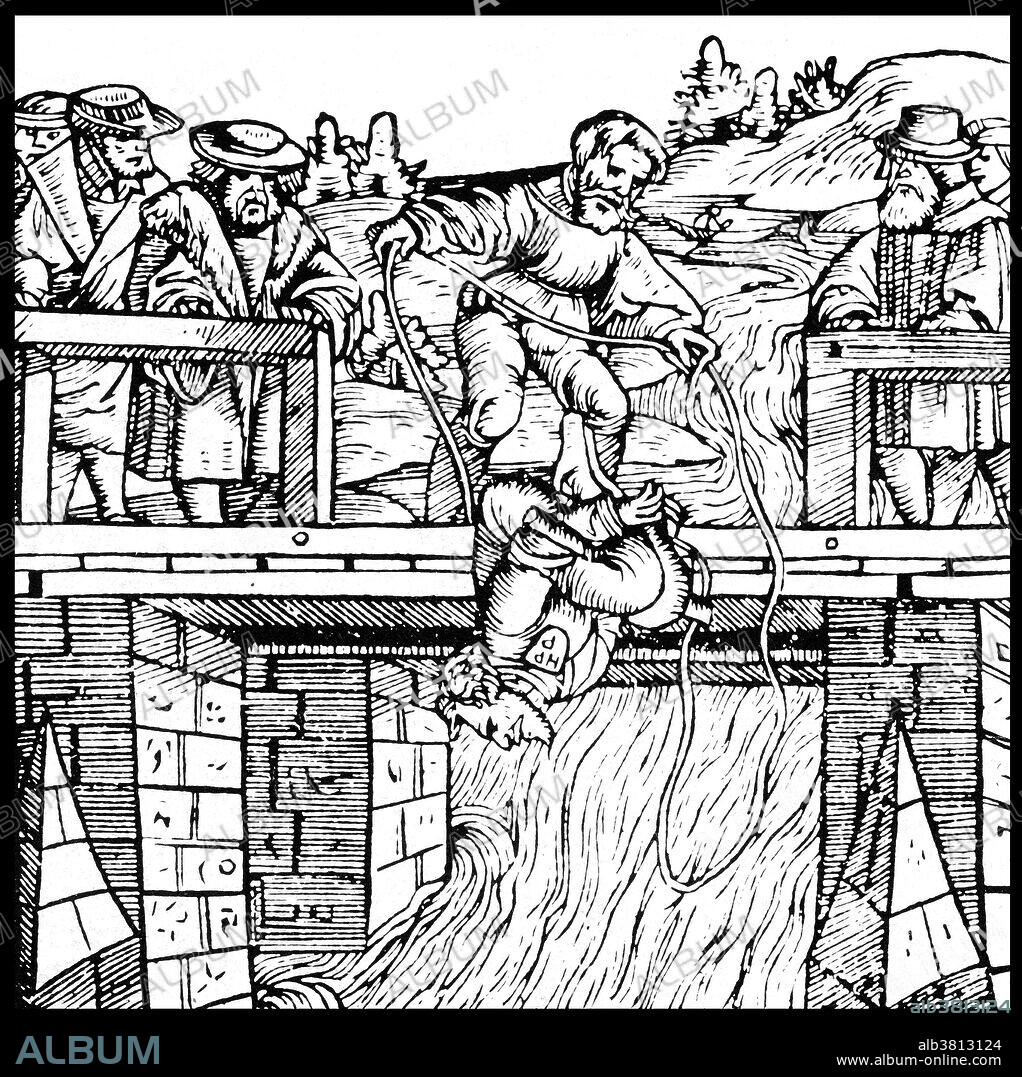alb3813124
Medieval Execution by Drowning, 16th Century

|
Ajouter à une autre Lightbox |
|
Ajouter à une autre Lightbox |



Avez-vous déjà un compte? S'identifier
Vous n'avez pas de compte ? S'inscrire
Acheter cette image

Titre:
Medieval Execution by Drowning, 16th Century
Légende:
Voir la traduction automatique
Victims were drowned in rivers, lakes and village pons, in boast and barrels, and even in bowls and saucepans. Sometimes he or she was tied up in a sack with a dozen cats. Trial by ordeal was an ancient judicial practice by which the guilt or innocence of the accused was determined by subjecting them to a painful, or at least an unpleasant, usually dangerous experience. The test was one of life or death and the proof of innocence was survival. In some cases, the accused was considered innocent if they escaped injury or if their injuries healed. During the Middle Ages, a sentence of death was read using the words "cum fossa et furca" (with pit and gallows). Drowning survived as a method of execution in Europe until the 17th and 18th centuries. England had abolished the practice by 1623, Scotland by 1685, Switzerland in 1652, Austria in 1776, Iceland in 1777, and Russia by the beginning of the 1800s. German wood but from an unknown source, early 1500s.
Crédit:
Album / NYPL/Science Source
Autorisations:
Modèle: Non - Propriété: Non
Questions sur les droits?
Questions sur les droits?
Taille de l'image:
3750 x 3756 px | 40.3 MB
Taille d'impression:
31.8 x 31.8 cm | 12.5 x 12.5 in (300 dpi)
Mots clés:
16E SIECLE • 16EME S • ALLEMAND • ALLEMANDE • BOIS, GRAVURE SUR • CONDAMNATION A MORT • CONDAMNATION • CRUAUTE • EXECUTION CAPITALE • EXECUTION • GRAVURE SUR BOIS • GRAVURE TAILLE DOUCE • ILLUSTRATION • MORT EXECUTION • PERSECUTION • POURSUITE • SEIZIÈME SIÈCLE • TAILLE-DOUCE • TECHNIQUE: GRAVURE SUR BOI • VICTIME • XVIE SIECLE • XYLOGRAPHIE
 Pinterest
Pinterest Twitter
Twitter Facebook
Facebook Copier le lien
Copier le lien Email
Email
